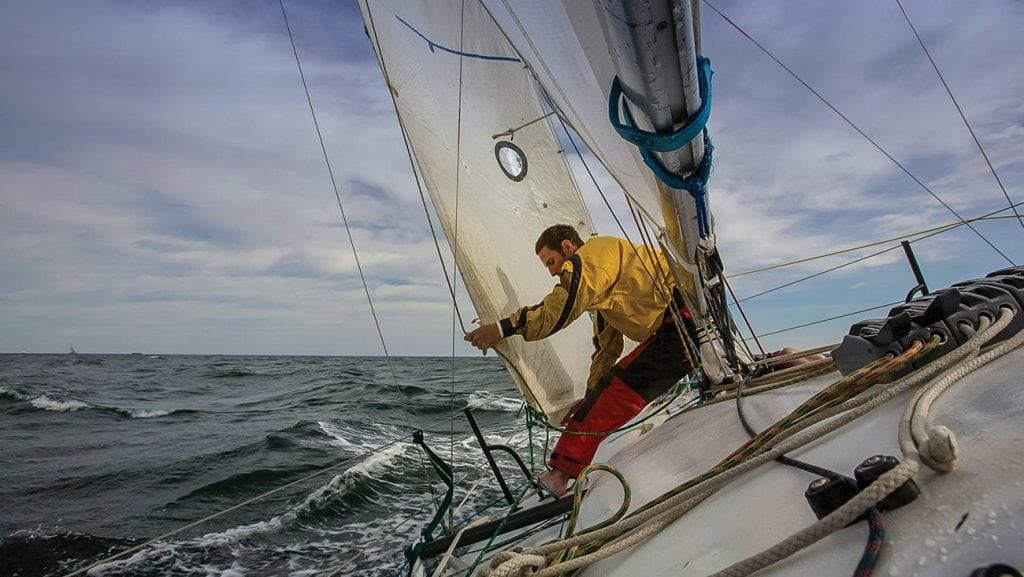Ryan Finn
Ryan Finn grew up sailing with his family on the northern Gulf Coast, but while undergoing treatments for cancer as a teenager he became fascinated and read everything he could get his hands on regarding solo sailing. Now at 36, Finn has successfully completed over 20,000 miles of solo offshore experience as well as three Trans-Atlantic and three Trans-Pacific crossings on boats ranging from Open 60s to Mini Transat designs. Fresh off the European racing circuit, Finn is now attempting his greatest challenge yet and needs your help grabbing the solo nonstop sailing record from New York to San Francisco on the old clipper ship sailing route around Cape Horn.
Finn has teamed with a leading America’s Cup boat designer to build a 32-foot Polynesian-style Proa in New Orleans. The unusual sailboat with only one outrigger off the hull is incredibly fast, especially going upwind, and the team expects the boat and the lone skipper would complete the 13,000-mile journey in less than 70 days using current weather models. While lining up corporate sponsors for the attempt, Finn is also crowdsourcing funding in what may be the first ever Kickstarter campaign used for a serious world record sailing attempt. Racing against himself, the weather, the notorious Cape Horn crossing, and time, Finn is sailing under the 2Oceans1Rock.org banner and if successful, could well join the boating history books alongside the legions of legendary sailors from the Gulf Coast.
A giant new species?
The Cajuns of South Louisiana are known to have an affinity for almost any tasty waterborne creature from crawfish to alligator, but their natural seafood diets failed to extend into the deepwater of the Gulf of Mexico where a curious pod of whales has been recently discovered. Whales are slightly unusual in the Gulf of Mexico although there are approximately 19 species, including humpback and sperm whales, that will range into the warm waters to feed, but marine biologists have located what may become an entirely new species of whale that calls one deep trench off the Northern Gulf Coast their permanent home.
Numbering only 50, these giants are baleen or great whales-—originally classified as Bryde’s whales—which can grow as long as 55 feet and weigh over 90,000 pounds. Feeding primarily on large amounts of small fish, the northern Gulf of Mexico is an especially productive fishing ground with the giant Loop Current interacting with the large bays and estuaries along the coast. A research expedition located them in the deepwater DeSoto canyon almost due south of Pensacola, and DNA and other testing have revealed that they may be their own species of whale. If so, this unique pod would immediately become the most endangered whale species in the world.
By Troy Gilbert, Southern Boating May, 2015













